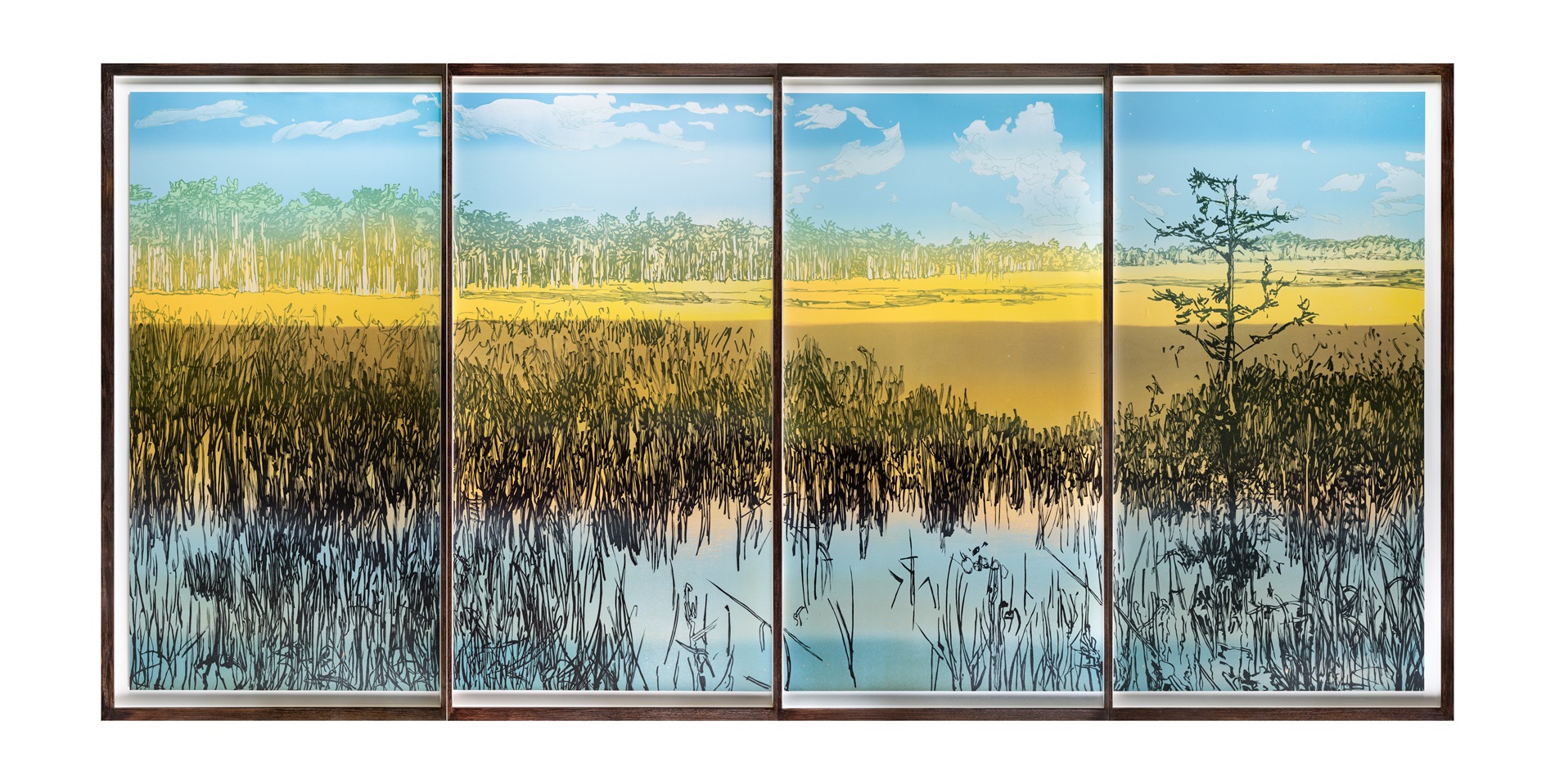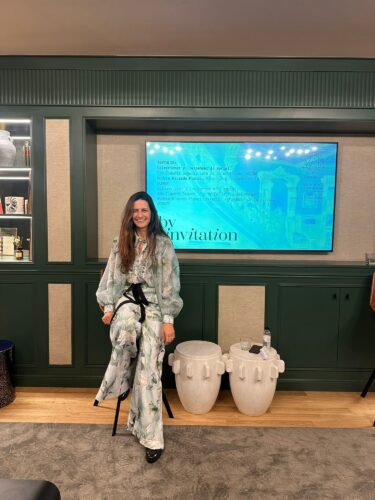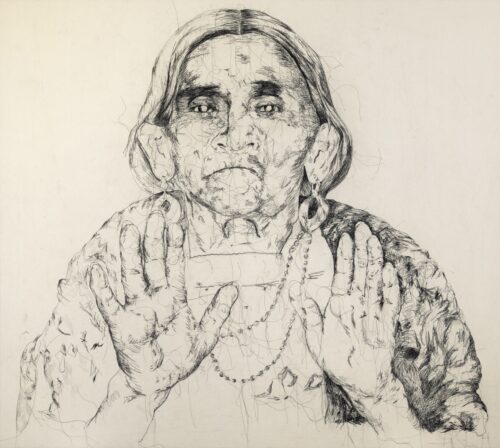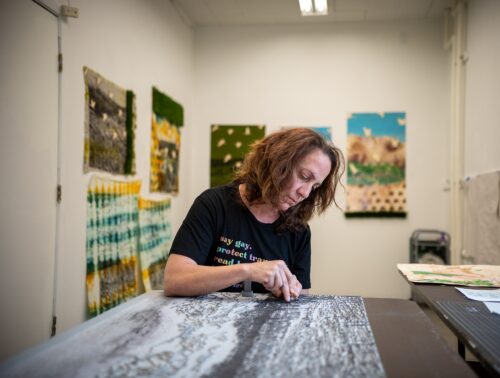Visual Art
El Espacio 23 Exhibition Reimagines Territory and Belonging

A World Far Away, Nearby and Invisible” transforms El Espacio 23 into a living map of shifting territories, gathering nearly 150 works that echo across continents yet remain rooted in Miami’s own porous ground. Shown is Jennifer Basile’s “Loop Road” (2023), included in the exhibition. (Photo courtesy of El Espacio 23)
In a city where borders feel permeable and reinvention is a local instinct, El Espacio 23 returns with a timely question: What is territory now? Is it land? History? A wound? A spiritual force? A place we inherit, or a place we imagine? That inquiry anchors “A World Far Away, Nearby and Invisible: Territory Narratives in the Jorge M. Pérez Collection,” the sixth exhibition at the contemporary art space founded by Miami developer, art collector and philanthropist Jorge M. Pérez.
The show opened on Thursday, Nov. 13 and is on view through Saturday, Aug. 26. It gathers nearly 150 works by more than 100 artists from the Americas, Europe, Africa and beyond, yet its pulse is distinctly Miami.
The exhibition is curated by Claudia Segura Campins, head of collection at Museu d’Art Contemporani de Barcelona (MACBA), in collaboration with Patricia Hanna, director at El Espacio 23 and Jorge M. Pérez Collection, and Anelys Alvarez, curator of the collections and programs, El Espacio 23 and Jorge M. Pérez Collection. When the project began, the proposed theme was “landscape,” a starting point Segura quickly challenged.

Miami voices remain central to the exhibition’s narrative. This year’s lineup includes José Bedia, Didier William, Teresita Fernández, and Nina Surel. Pictured is José Bedia’s “Salto transcendental de un agujero negro a una estrella” (c. 1990). (Photo courtesy of El Espacio 23)
“Landscape is a concept built from a distanced gaze,” she says. “Historically, it belongs to the colonizer describing and fragmenting a place. I wasn’t interested in a static image of land. I wanted the living, porous, shifting idea of territory.”
That shift widened the exhibition’s scope. “Territory let us move past the visible surface,” explains Segura. “It allowed for memory, politics, ancestral knowledge, violence, ecology, spirituality. ‘Landscape’ was a frame. ‘Territory’ was an opening.”
Hanna says they wanted to tell a broader story. “Territory wasn’t just soil, it was community, energy, the invisible forces underneath.”
The exhibition unfolds in four conceptual “chapters,” not as fixed categories but as lenses: “The Pulse,” “Whispers from the Land,” “Shelter Among the Scars,” and “Landscapes in the Making.” In “The Pulse,” the earth is not a backdrop but protagonist: water, fire, minerals and biological life asserting their own agency. “What forces are shaping us that we don’t control?” asks Segura. “Miami understands that question better than most cities. This place is literally built on mangrove and uncertainty.”

Guest curator Claudia Segura Campins, who oversees the collection at MACBA in Barcelona, brings an expansive, research-driven approach to the exhibition. (Photo courtesy of Claudia Segura Campins)
“Whispers from the Land” carries the spiritual and ancestral dimension of territory, including the moment that gave the exhibition its title. Segura recalls the turning point: “We struggled for weeks to name the show. Then we realized the title was already inside the collection.” She refers to a work by artist Tania Candiani depicting the Mazatec healer and poet María Sabina. “Sabina spoke of a world far away, invisible but very near, a world you access by listening to the land. The title had already been given to us by the work. The exhibition just had to receive it.”
If territory can whisper, it can also scar. The third chapter addresses extraction, displacement, forced migration and environmental devastation, without flattening them into a single message. “Territory remembers the violence written on it,” says Segura. “But it also remembers resistance, regeneration, joy. That duality matters.”
Throughout the show, artists appear in unexpected constellations: women abstractionists from different decades, Indigenous cartographies alongside digital landscapes, Caribbean eco-futurisms in dialogue with post-Soviet geographies. “The most fascinating thing was realizing how many artists in the Pérez Collection were already speaking to each other across time,” notes Segura. “You place a Venezuelan artist next to a South African one, and suddenly they are asking the same question in different languages.”

The exhibition takes its title from a work inside the collection—Tania Candiani’s portrait of Mazatec healer María Sabina, whose chants spoke of “a world far away, invisible but near,” says curator Claudia Segura Campins. Above, Tania Candiani’s “María Sabina” (2024). (Photo courtesy of El Espacio 23)
That interconnection reflects the collection itself. “Every exhibition here is a moment of reflection,” says Álvarez. “The collection is always expanding, so the threads shift, but they are always global, always in conversation.”
That global reach was underscored just weeks ago, when the Tate in London announced a landmark gift from Jorge M. and Darlene Pérez: 36 works by artists from Africa and the African diaspora, including El Anatsui, Yinka Shonibare, Joy Labinjo and Bruce Onobrakpeya, along with a major endowment creating the new position of Jorge M. Pérez Senior Curator, International Art, Africa and Diaspora, held by Osei Bonsu. Coming after the Pérez donation of a monumental Joan Mitchell triptych, the gift signals what Segura calls “a collector expanding the borders of institutional memory.”
That sense of widening territory also applies to Miami, a city where climate, migration and myth crash into each other daily. “Miami is a threshold city,” says Segura. “A place made of crossings: languages, waters, storms, arrivals. Even geologically, the land is unstable. That instability became a curatorial key.”
El Espacio 23 has long treated that instability as an invitation rather than an obstacle. Though privately funded, its mission is public: free admission, multilingual tours, residencies, and an open-door policy designed to dissolve the distance between collection and community. “There are no borders inside El Espacio,” says Hanna. “No matter your story, we want at least one work to look back at you.”
Miami voices remain central to the exhibition’s narrative. This year’s lineup includes José Bedia, Didier William, Teresita Fernández and Nina Surel.
Also included is printmaker Jennifer Basile, whose large-scale relief works translate the Everglades into vivid, painterly topographies. “I want you to feel that grandiosity the way the Hudson River School painters did,” says Basile. “That sense of beauty and vastness but tied to the ecology we are losing in real time.” A New Yorker who has spent three decades in South Florida, Basile calls her work “a form of preservation and a warning.”

Miami-based printmaker Jennifer Basile (pictured) is among the local artists featured in the exhibition, known for her large-scale relief works that translate the Everglades into sculptural, almost painterly landscapes. “I want you to feel that grandiosity the way the Hudson River School painters did,” she says. (Photo by Carolina Porras Monroy, courtesy of the artist)
Basile’s connection to the land is not a metaphor. “I hike it, I swamp-walk it, I study it with scientists and tribal leaders,” she says. “You can’t advocate for a place you don’t breathe.” Her print in the show depicts Loop Road in the Everglades, a site she fears may soon disappear under development. “If someone sees the work and asks, ‘Where is this? Can we go?’, that is the beginning of protection.”
For Segura, that kind of lived relationship to territory is the core of the exhibition. “Territory is not a map,” she says. “It is something inhabited, negotiated, dreamed, damaged, defended. It is not neutral. It is neither still.” If territory were a living voice, she adds, “it would ask us to listen, to place the invisible at the same level as the visible, and to accept that we are never separate from the ground we stand on.”
In that sense, “A World Far Away, Nearby and Invisible” is less a definition than a rehearsal, an open question staged in artworks rather than answered by them. “Territory is the memory we inherit and the future we imagine,” says Hanna. “It is not just a place. It is a force.”
WHAT: “A World Far Away, Nearby, and Invisible from The Jorge M. Pérez Collection.”
WHEN: Through Saturday, Aug. 15, 2026. Gallery hours, 10 a.m. to 5 p.m., Thursday to Saturday
WHERE: El Espacio 23, 2270 NW 23rd St., Miami
COST: Free.
INFORMATION: 786-490-9090 or elespacio23.org
ArtburstMiami.com is a nonprofit media source for the arts featuring fresh and original stories by writers dedicated to theater, dance, visual arts, film, music and more. Don’t miss a story at www.artburstmiami.com.
